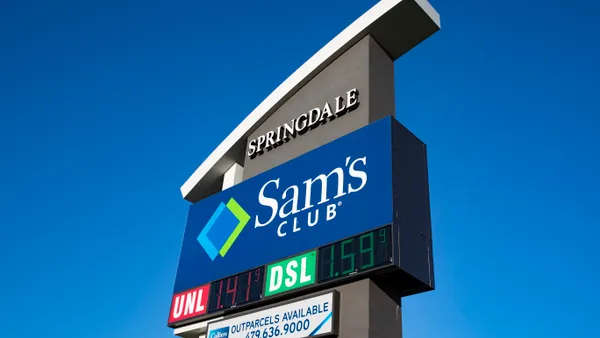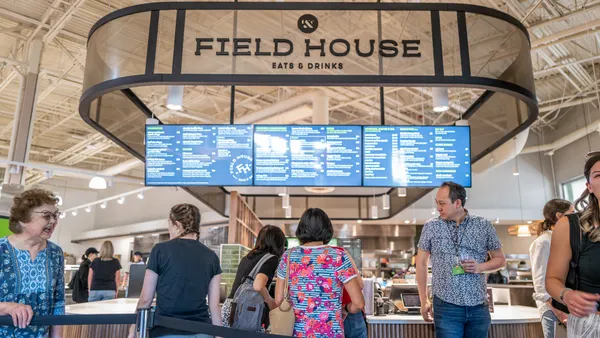Dive Brief:
- Greenpeace's 10th edition of its "Carting Away the Oceans" report says while U.S. retailers have made big strides in providing sustainable seafood, they haven't taken enough action on single-use plastics or on making sure workers' rights are protected in the seafood industry.
- Most of the 22 retailers assessed received passing scores, although Greenpeace said that every single one failed 10 years ago. The top-ranked retailers this year were Whole Foods, Hy-Vee, Aldi and Target. At the bottom were Wakefern, Price Chopper, Save Mart and H-E-B. Trader Joe's fell the furthest, dropping seven spots since the previous Greenpeace report.
- In a separate study, the Marine Stewardship Council found that global seafood consumers want to know that supermarket sustainability claims are real, but they also want them independently verified. And, while seafood consumers care about pollution and overfishing, some put price over sustainability when it comes to purchasing decisions.
-
Dive Insight:
The Greenpeace report found the majority of the nation's largest retailers have generally been improving their performance in providing sustainable seafood, but they have a long way to go when it comes to reducing single-use plastics and making sure that seafood companies protect workers' rights.
"It’s not truly sustainable seafood if it is produced by forced labor and then wrapped in throwaway plastic packaging,” David Pinsky, an oceans campaigner for Greenpeace, said in a statement.
Whole Foods was in the No. 1 spot this year because it adopted a "strong shelf-stable tuna policy and marked sourcing improvements," Greenpeace said. Hy-Vee was in the second position due to "advocacy and transparency initiatives." Aldi made it to No. 3 for the first time because of new policies addressing transshipment at sea, which Greenpeace said is linked to illegal fishing and human rights abuses. And Target was assessed as No. 4 because of progress in policy and advocacy initiatives, although Greenpeace noted the company had broken a 2010 commitment by bringing back farmed salmon to its stores.
At the bottom of Greenpeace's rankings this year, Wakefern, which dropped five spots, declined to participate in the survey process. Price Chopper fell six spots because of lack of initiatives and customer engagement on sustainable seafood. H-E-B refused Greenpeace's invitation to have a dialogue on sustainable seafood, the group said, and has made "questionable moves since the last assessment, like reintroducing orange roughy."
Reports like this could prompt retailers to adopt more sustainable policies in order to achieve better rankings, which they can then advertise to shoppers looking for transparency. But Greenpeace isn't likely to let anyone off the hook. The report noted that none of the retailers assessed has comprehensive policies to reduce and ultimately phase out their reliance on single-use plastics.
"The equivalent of a garbage truck of plastic enters our oceans every minute, and with plastic production set to double in the next 20 years — largely for packaging — the threats to ocean biodiversity and seafood supply chains are increasing," the report stated. "Greenpeace is urging retailers to take responsibility for their contribution to this pollution crisis, as cities nationwide and large foodservice companies are already making commitments to start phasing out single-use plastics."
The question remains whether consumers really care about sustainability when they're making purchasing decisions. The Marine Stewardship Council study of more than 25,000 customers in 22 countries found that 70% of them want companies to tell them more about the sustainability of their seafood. In general, some consumers — particularly men — are more motivated by price, while women are more concerned with sustainability. But regardless of age or gender, consumers in Germany, Austria, China, Spain, the UK, Switzerland, Italy and Sweden put sustainability above price.
Seafood companies that want to lure customers might want to pay attention to a 2015 Nielsen study that found companies investing in independent labeling and effective consumer communications do 4% better than the competition.
According to a 2016 Future of Fish report, consumers trust retailer information about seafood almost as much as that from friends or family. They want information about the fish they buy, including whether it is wild or farm-raised. Also, grocers who provide more information about the supply chain are more likely to capture consumer attention. Sustainability and traceabiilty are more expensive, but shoppers may be willing to overlook a higher price for seafood that responds to those increasingly important values.










